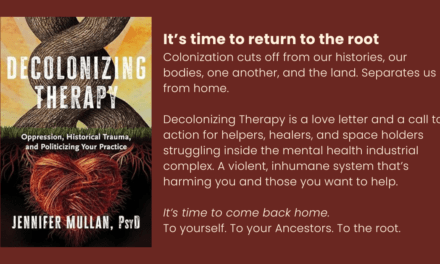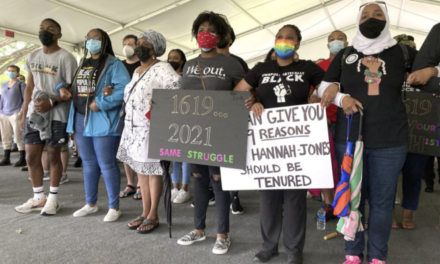
Are your workplace discussions on race really designed to positively impact BIPOC employees, or are they centered around helping white employees live with the discomfort of racism?
Are your workplace discussions on race really designed to positively impact BIPOC employees, or are they centered around helping white employees live with the discomfort of racism? Share on XAs a D&I professional, I worked with two different organizations as they deliberated how to approach addressing the racial climate at two different instances of public injustice and national unrest. One decided not to discuss recent acts of racial injustice in the community, while the other decided to hold a facilitated discussion on race.
The intentions and actions of these organizations were different but yielded the same outcome. In both cases, executives experienced support from their white employees and frustration and disappointment from their BIPOC employees.
In the first organization, I encouraged executive leadership to speak out about the murder of a person of color at the hands of police. I provided a plan for continuous training, resources and discussions on the issue, but leadership felt this was not something they wanted to encourage amongst employees.
I remember how that decision felt. A young Black man was murdered by the police. The story and image of his death were played repeatedly in the media. As a biracial woman, I was horrified, stressed, upset, disappointed, disillusioned and numb. I was tired. I saw that young man’s face in my family members, and I knew what would happen next. His parents were shown on a loop with a high-powered social justice attorney, pleading for justice for their son. Then, the police department promised a fair and impartial investigation. Then, the event was politicized, and the life and reputation of this young man was tarnished in the media. Investigative media outlets began to sift through his life, looking for any academic difficulties, any drug use and arrest records. As if any of that mattered in the issue of his murder. This is the playbook.
I went into work the day after the murder of yet another Black person with a mix of emotions that I expected everyone would feel. What happened hurt much more. At work the next day, (aside from BIPOC at work) no one mentioned a thing. Many of my white coworkers didn’t seem to care about what happened and leadership already decided to remain silent on the issue. I negotiated, argued, advocated for resources to do something. They did not agree. I left that organization a few months later.
I went into work the day after the murder of yet another Black person with a mix of emotions that I expected everyone would feel. No one mentioned a thing. I left that organization a few months later. Share on XA few years later in a different organization, another murder occurred of a young Black man at the hands of the police. The reaction of this executive leadership was different. They consulted with our office and formulated a well thought out statement to employees about their support during this affront on social justice. They also pledged financial support to help our office put together facilitated conversations on the issue. Almost the opposite of my last experience.
My office brought in consultants, EAP, our training department and our ERG leaders, and after a few weeks we put together a series of facilitated discussions on race. Our survey of employees was overwhelmingly supportive, but upon closer look at the post-discussion evaluations, BIPOC employees were not. I started receiving requests for meetings from BIPOC employees who had participated because they were upset about the experience. They experienced the following:
- Micro-dismissive comments from white participants.
- Lack of psychological safety of speaking because they were in the minority.
- Feeling vulnerable speaking in groups that included members of management.
- Feeling pressure and expectation to represent all BIPOC.
- Defensiveness in reaction to hearing BIPOC experiences.
- Dismissal of policing being a social justice issue.
- Frustration with white participants sharing their historical experience as comparable to the experience of BIPOC people.
- Double-standards as some employees showed solidarity in the discussion but later spoke differently amongst coworkers.
The discussions centered white comfort: white people felt good about themselves, proud of the organization and felt as though the race “issue” was resolved within the organization. Many BIPOC employees felt frustrated and disappointed with the whole experience.
The discussions centered white comfort: white people felt good about themselves, proud of the organization and felt as though the race 'issue' was resolved within the organization. Many BIPOC employees felt frustrated and… Share on XI write all of this to say there is no magic solution to this nation’s original sins, slavery, racism and the theft and occupation of these lands. These issues will not be solved with one discussion or statement from an executive leader. These issues will not be solved by ignoring social justice, which impact all of us. This work is complicated and needs to continue. I have learned a lot as a D&I professional:
There is no magic solution to this nation’s original sins. These issues will not be solved with one discussion. These issues will not be solved by ignoring social justice. This work is complicated. Share on X- There needs to be more intentional action to cultivate psychological safety for BIPOC employees.
- The focus should not be on how uncomfortable non-BIPOC employees may feel.
- Facilitation should supplement healing, like that of restorative justice talking circles.
- Facilitators should be BIPOC or D&I professionals trained in dialogue principles.
- Debriefs should acknowledge and affirm the experiences of BIPOC and the stressors they may face in these conversations.
- Preparation should include the consultation of a culturally sensitive mental health professional.
If you are thinking of having discussions on race, or you have had them for the first time as an organization, take the time to think about the experience of your BIPOC employees. Notice and appreciate the vulnerability and risk they are taking in participating in this at work. Please don’t expect them to participate or speak about the issue. Finally, give them space after the discussions take place. These are incredibly stressful times for many Americans, but they are especially stressful for BIPOC employees or employees with BIPOC family members, who see representations of themselves being brutally impacted by racism daily.
Think about the experience of BIPOC employees. Notice and appreciate the vulnerability and risk they are taking in participating in this at work. Don't expect them to participate or speak about the issue. Give them space after the… Share on X



















